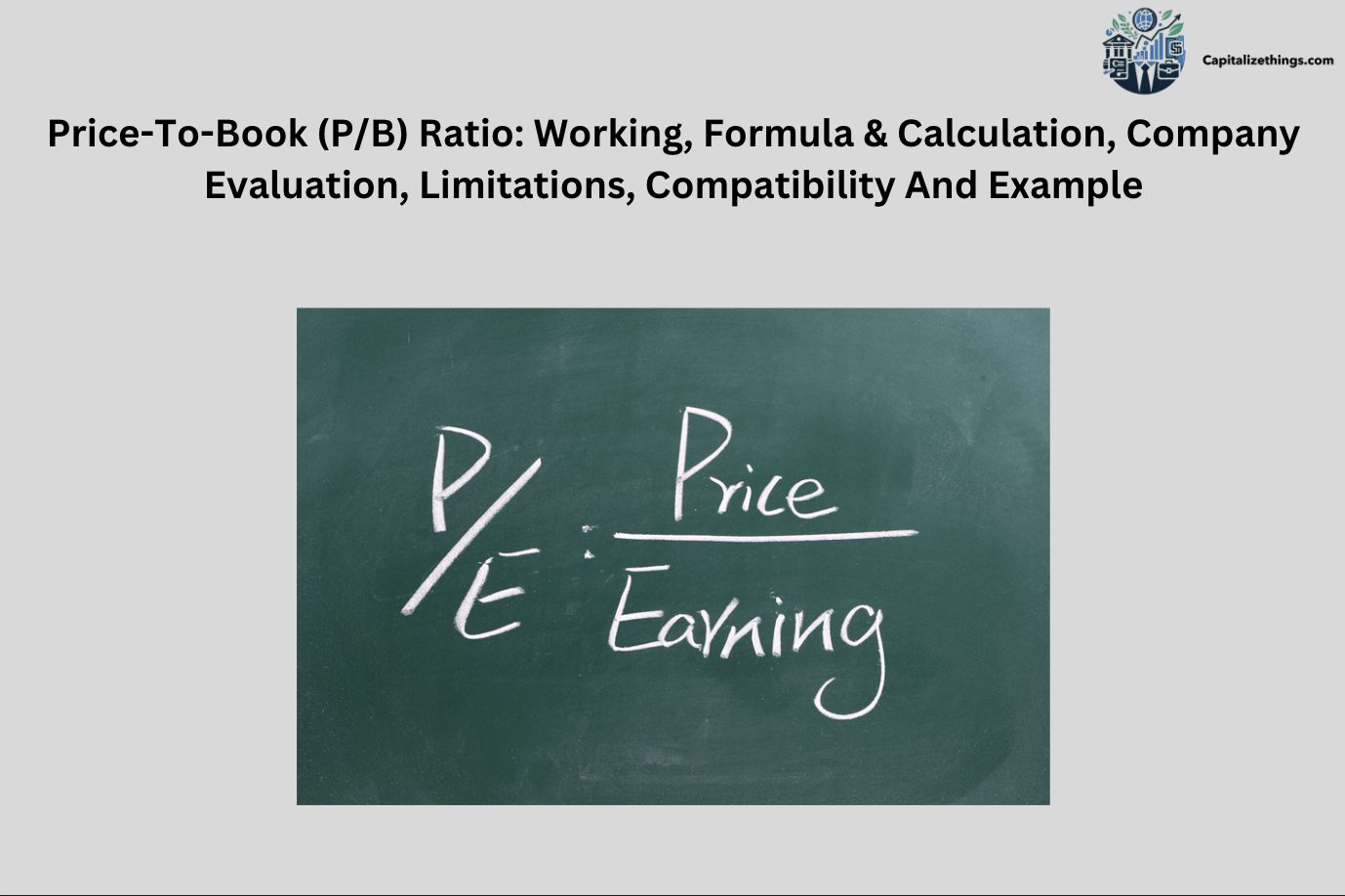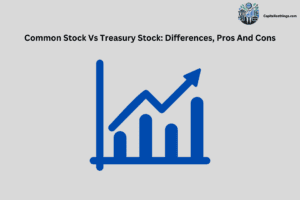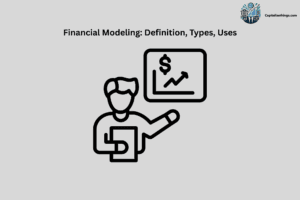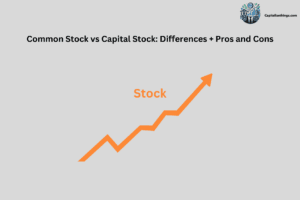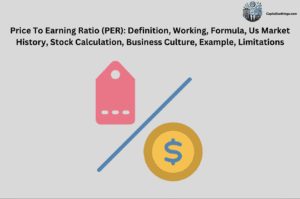The Price-to-Book (P/B) ratio is a financial metric that compares an agency’s marketplace price to its book value. It is calculated through dividing the marketplace rate according to percentage by means of the book cost according to percentage. This ratio enables buyers to evaluate whether a stock is overestimated or undervalued relative to its belongings. A P/B ratio below 1 also suggests that the stock is undervalued, whilst a ratio above 1 suggests it might be overrated.
The Price-to-Book (P/B) ratio compares an agency’s marketplace cost to its book value. The market cost is the modern inventory charge multiplied by way of the overall number of stocks. The book value represents the enterprise’s total belongings minus liabilities, as recorded at the balance sheet. Investors use the P/B ratio to evaluate whether an inventory is undervalued or overrated with the aid of evaluating its marketplace fee with its book cost.
The formula for the Price-to-Book (P/B) ratio is:
P/B Ratio= Book Value per Share/Market Price per Share
To calculate it:
- Find the market price per share.
- Calculate the book value per share, which is the company’s total equity divided by the number of outstanding shares.
- Divide the market price by the book value to get the P/B ratio.
Investors use the P/B ratio to assess companies by comparing their market price to their book cost. A P/B ratio below 1 suggests the marketplace can also undervalue the organization, likely signaling an opportunity. A ratio above 1 indicates the company is overrated relative to its assets. The P/B ratio is particularly beneficial for evaluating groups with sizable tangible assets, like banks or production companies, because it directly displays asset valuation. The P/B ratio has numerous boundaries. It doesn’t account for intangible asset like highbrow property or brand value, which can lead to undervaluation of organizations with good sized intangible asset.
The ratio also doesn’t consider destiny earnings ability. In industries in which intangible asset are giant, the P/B ratio won’t provide a complete picture of an organization’s price. Market situations and accounting practices also can affect the ratio. The P/B ratio is maximum like-minded with asset-heavy industries, like banking and production. For example, do not forget Company X, with a marketplace rate per proportion of $50 and a book price consistent with the proportion of $forty. The P/B ratio would be:
P/B Ratio = 1.25
This ratio indicates the market values Company X at 1.25 times its book price, indicating capability overvaluation.
What is the Price To Book(P/B) Ratio?
The Price-to-Book (P/B) Ratio is a financial valuation metric that contrasts a company’s marketplace capitalization to its book price, derived from its balance sheet. It’s calculated through dividing the current marketplace price in keeping with share by way of the book cost in line with share. A P/B ratio below one indicates that the marketplace undervalues the organization relative to its tangible belongings, doubtlessly signaling a funding opportunity. Conversely, a P/B ratio above one shows the employer is buying and selling at a top class, reflecting perceived increase potentialities or overvaluation.
What Are The Common Other Names Of Price-To-Book(P/B) Ratio?
The Price-to-Book (P/B) ratio is also referred to as the market-to-book ratio or the charge-to-equity ratio. These names replicate how the ratio compares the marketplace capitalization of an organization, or its overall inventory fee, to the fee recorded on its stability sheet.
Value traders use this ratio to discover undervalued stocks. They search for stocks buying and selling at a lower rate than their actual worth based on the organization’s assets. This ratio allows checking if a stock is priced fairly in comparison to its economic health. The P/B ratio is a key metric in price making an investment and is extensively utilized by those specializing in boom at an inexpensive fee.
Is Price-To-Book Ratio The Same As Market To Book Ratio?
Yes, the Price-to-Book (P/B) ratio and the Market-to-Book ratio are the equal financial ratio. Both terms describe the assessment among an enterprise’s marketplace capitalization and its book fee as indexed at the stability sheet. This evaluation facilitates value investors discovering undervalued stocks.
The P/B ratio is famous in cost making an investment as it enables to find companies whose marketplace fee is decreased than their actual real worth. By evaluating the market price with the book value, traders can decide if a stock is undervalued or overestimated. Both terms are interchangeable and are used to evaluate an enterprise’s valuation relative to its property.
How Does Price-To-Book Ratio Work?
The Price-to-Book (P/B) ratio works by evaluating a corporation’s marketplace capitalization to its book value. This economic ratio allows investors to see if a stock is undervalued. If the P/B ratio is under 1, it suggests an undervalued stock, that means the marketplace charge is much less than the enterprise’s actual well worth primarily based on its property.
A ratio above 1 would possibly suggest the inventory is hyped up. Value buyers use this ratio to locate stocks which can be priced lower than their book value at the balance sheet. The P/B ratio is useful in industries with large tangible assets, like banks, where it can help decide if the inventory is priced as compared to its financial health.
What Does The Price To Book Ratio (P/B) Tell Us?
The Price-to-Book (P/B) ratio tells us if a company’s stock might be undervalued or puffed up by means of comparing its market capitalization to its book fee. This monetary ratio is prime in fee investing, in which investors look for stocks buying and selling under their genuine real worth. If the P/B ratio is beneath 1, it indicates the inventory undervalued. A ratio above 1 ought to imply the stock is puffed up. The P/B ratio is specifically useful for evaluating organizations with great tangible belongings, such as banks, where it suggests if the inventory is priced pretty. This ratio facilitates investors to assess a corporation’s valuation relative to its economic fitness.
What Is Formula For Price To Book Ratio?
The formula for the Price-to-Book (P/B) ratio is:
P/B Ratio= Book Value per Share/Market Price per Share
In the formula the market charge in keeping with percentage represents the present-day fee of a single proportion of the enterprise’s inventory within the market. The book cost in keeping with proportion is the enterprise’s general equity divided via the range of first-rate shares. Equity is calculated by subtracting liabilities from assets on the balance sheet.
The P/B ratio is an economic ratio that allows traders to examine if an inventory is undervalued or puffed up by means of evaluating its market capitalization to its book fee. Value buyers frequently use this ratio to perceive investment possibilities in groups whose stock is trading under its book price.
How Do We Calculate The P/B Ratio?
To calculate the Price-to-Book (P/B) ratio, comply with these steps:
- Find the market fee in step with proportion, that’s the contemporary value of a single percentage inside the inventory market.
- Determine the book fee in keeping with proportion, calculated by dividing the company’s general equity via the range of incredible stocks.
- Use the formulation.
P/B Ratio= Book Value per Share/Market Price per Share
This financial ratio compares the organization’s marketplace capitalization to its book value, helping fee traders locate undervalued shares. The P/B ratio is vital for making an investment, as it can suggest whether a stock is priced below its actual real worth based totally on the company’s assets.
Price to Book Ratio Calculator
How Do You Calculate Market To Book Ratio?
To calculate the Market-to-Book ratio, that’s some other call for the Price-to-Book (P/B) ratio, follow those steps:
- Find the market capitalization by multiplying the modern-day inventory rate through the overall quantity of stocks.
- Determine the book value, which is the company’s total belongings minus liabilities, as recorded at the stability sheet.
- Divide the marketplace capitalization through the book cost to get the Market-to-Book ratio.
This financial ratio enables cost buyers to investigate whether an agency is undervalued or overrated via comparing its market price to its book price. The Market-to-Book ratio is a key metric in price making an investment and is broadly used to evaluate an agency’s valuation relative to its assets.
What Is The Formula For The Market Price To Book Value Ratio?
The system for the Market Price-to-Book Value ratio, additionally known as the Price-to-Book (P/B) ratio, is:
Market Price-to-Book Value Ratio = Book Value per Share/Market Price per Share
In this formulation, the market charge per share is the current fee of a single percentage inside the stock marketplace. The book cost per share is the agency’s total equity divided by way of the number of tremendous shares. This monetary ratio compares a company’s market capitalization to its book price, helping traders compare if the stock is undervalued or overestimated. The Market Price-to-Book Value ratio is a key metric in fee investing and is extensively used to assess an agency’s valuation relative to its belongings.
What Is The Meaning Of Term Company Evaluation?
Company evaluation is the process of assessing an enterprise’s economic health and ordinary worth. This includes studying diverse monetary ratios, just like the Price-to-Book (P/B) ratio, market capitalization, go back on equity (ROE), and rate-to-income ratio. The evaluation also considers intangible assets like highbrow capital and research and development. Investors use those metrics to decide if an enterprise’s inventory is undervalued or overrated.
Company assessment is vital in fee investing, in which the purpose is to discover stocks buying and selling under their real worth. It entails a thorough analysis of the agency’s stability sheet, profits statement, and different monetary files to assess its profitability, boom ability, and typical market function. This method enables buyers to make informed choices approximately buying or promoting stocks.
How Do We Evaluate Companies Using The Price-To-Book (P/B) Ratio?
To compare organizations the use of the Price-to-Book (P/B) ratio, follow these steps:
- Calculate the P/B ratio through dividing the marketplace charge according to percentage with the aid of the book cost per proportion.
- Compare the P/B ratio with industry requirements. A ratio underneath 1 implies an undervalued stock, even as a ratio above 1 wants to propose overvaluation.
- Analyze the enterprise’s balance sheet to make sure the book value appropriately displays its assets and liabilities.
The P/B ratio is an economic ratio that enables fee buyers to find undervalued shares with the aid of comparing an organization’s marketplace capitalization to its book value. This ratio is especially useful in industries with great tangible property, like banking, in which it can indicate if the stock is priced pretty. Value traders frequently use the P/B ratio as part of their agency assessment system to pick out capability funding opportunities.
How Does A Low Price-To-Book (P/B) Ratio Works?
A low Price-to-Book (P/B) ratio shows that an inventory is probably undervalued. This economic ratio compares the marketplace capitalization to the book fee. When the P/B ratio is underneath 1, it indicates that the employer’s inventory is trading for less than its actual worth based totally on the assets indexed on its balance sheet.
This situation frequently attracts price buyers who are seeking for undervalued stocks. These buyers accept as true that the market can not completely appreciate the agency’s capability or that the stock is briefly out of favor. A low P/B ratio signals that the marketplace has not noted the corporation’s economic health, making it a potential candidate for investment. However, it is essential to investigate similarly to make sure the low ratio isn’t due to underlying issues like poor control or declining enterprise possibilities.
How Does A High Price-To-Book (P/B) Ratio Works?
A high Price-to-Book (P/B) ratio suggests that an inventory might be overestimated. This financial ratio compares the market capitalization to the book price. When the P/B ratio is above 1, it indicates that the employer’s inventory is buying and selling for extra than its real worth based totally on the belongings listed on its stability sheet.
This situation can appeal to a boom at an inexpensive fee (GARP) buyers, who’re inclined to pay a top class for companies with high increase potential. An excessive P/B ratio additionally mirrors the business enterprise’s strong go back on equity (ROE) or full-size intellectual capital, like patents or brands, no longer fully captured within the book cost. However, buyers must be careful, as a high P/B ratio can also indicate that the stock is overhyped or that the market is overly positive about the company’s destiny possibilities.
What Are The Limitations Of Price-To-Book (P/B) Ratio?
The Price-to-Book (P/B) ratio has several boundaries, First, it doesn’t account for intangible belongings like intellectual capital, that result in the undervaluation of agencies with sizable studies and development. Second, the P/B ratio focuses totally on book cost, ignoring future profits potential, making it much less useful for agencies with strong increase possibilities. Third, the ratio is not powerful for organizations in industries with few tangible assets, like technology corporations.
Fourth, the P/B ratio is distorted by buybacks, which artificially inflate the book price in step with proportion. Fifth and lastly, market conditions and accounting practices can also impact the ratio, making it much less reliable in sure conditions. Despite these barriers, the P/B ratio remains a treasured device in value making an investment whilst used alongside different financial ratios just like the rate-to-income ratio and return on equity (ROE).
Is PB Also A Risk Assessment Tool?
Yes, the Price-to-Book (P/B) ratio is an economic ratio as It enables price buyers to determine investment threats with the aid of comparing a business enterprise’s market capitalization to its book fee. A low P/B ratio displays an undervalued inventory. This can also decrease danger for cost investing. However, a very low P/B ratio also means that an enterprise is liable to financial disaster. It is vital to study different elements, like the organization’s stability sheet and return on equity (ROE), to apprehend the whole hazard.
Is Price-To-Book(P/B) Ratio Compatible With Capital Intensive Industries?
The Price-to-Book (P/B) ratio works excellent for capital-extensive industries. These industries, like manufacturing or utilities, have huge property on their stability sheets. The P/B ratio compares market capitalization to book cost, which displays these belongings. Value investors use this economic ratio to locate undervalued shares. A low P/B ratio can sign that an organization’s assets aren’t fully recognized with the aid of the marketplace. This makes the P/B ratio a strong device for comparing asset-heavy corporations.
Is Price-To-Book(P/B) Ratio Compatible With Intangible Assets?
The Price-to-Book (P/B) ratio is much less well suited with businesses which have many intangible assets. Intangible belongings, like highbrow capital or research and improvement, are not completely recorded at the balance sheet. This makes the book cost lower than it should be. For those corporations, the P/B ratio might not display their proper fee. Value investors need to use other economic ratios, like the fee-to-equity ratio, to get a better information of the agency’s valuation.
Is Price-To-Book(P/B) Ratio Compatible With Debt Levels?
The Price-to-Book (P/B) ratio is useful; however, debt levels can affect its accuracy. A company with high debt additionally has a low book price, even supposing its marketplace capitalization is high. This could make the P/B ratio look better or worse than it must. Value buyers ought to look at a business enterprise’s debt on its balance sheet whilst the use of the P/B ratio. Understanding debt is prime to making sure the P/B ratio shows the genuine economic fitness.
Is Price-To-Book(P/B) Ratio Compatible With Asset Values?
The Price-to-Book (P/B) ratio is best when asset values are clear and vital. It compares an employer’s market capitalization to its book cost, which is primarily based on assets indexed at the balance sheet. For companies with lots of physical property, like real estate, the P/B ratio is a superlative device for finding undervalued shares. Value buyers agree with this monetary ratio to help them find stocks wherein the marketplace has not fully identified asset values.
What Is A Good Example Of Price To Book Pe Ratio?
A correct instance of the Price-to-Book (Pe) ratio is while price traders find an undervalued inventory inside the banking zone. Banks have many assets on their stability sheets, like loans and assets. If a financial institution has a P/B ratio of 0.8, it means the market capitalization is less than its book cost. This economic ratio shows that the inventory can be undervalued. The investor might also see this as a buying possibility at an inexpensive charge.
What Is A Good Number For Price-To-Book Ratio?
An exact number for the Price-to-Book (P/B) ratio relies upon the business, Generally, a P/B ratio around 1 is visible as an honest value. A P/B ratio under 1 might also indicate an undervalued stock, where the marketplace capitalization is much less than the book fee. Value traders regularly are trying to find out those possibilities. However, if the P/B ratio is just too low, it can sign problems, like bad go back on equity (ROE) or the danger of financial ruin.
Is A PB Ratio Less Than 1 Good?
A Price-to-Book (P/B) ratio much less than 1 can be desirable. The market capitalization is less than the book fee of the enterprise. This suggests the inventory is undervalued. Value traders frequently look for these possibilities to buy at a discount. However, a completely low P/B ratio also can be a caution sign. It would possibly suggest the corporation is facing economic hassle, that can lead to decreased returns or even bankruptcy.
Is 2 A Good Price-To-Book Ratio?
A Price-to-Book (P/B) ratio of two seen as desirable, relying on the enterprise. It means the marketplace capitalization is twice the book cost. This ratio shows the marketplace sees increased capability. Value buyers can be careful, as this economic ratio could also suggest the inventory is overrated. It’s important to study other financial ratios, just like the rate-to-equity ratio or return on equity (ROE), to apprehend the company’s usual valuation.
Is A Price-To-Book Ratio Of 3 Good?
A Price-to-Book (P/B) ratio of 3 shows the marketplace capitalization is three times the book cost and this can be suitable if the agency has a high increase capacity. However, for cost investors, this financial ratio would possibly imply that the inventory is puffed up. It’s vital to recollect different elements, just like the organization’s income, debt levels, and go back to equity (ROE), to determine if the stock is worth the fee. High P/B ratios require careful analysis.
What Is An Overvalued Price-To-Book Ratio?
A puffed-up Price-to-Book (P/B) ratio is generally above 3. This way the market capitalization is a whole lot higher than the book value of the organization. For fee buyers, this economic ratio would possibly signal that the stock is overpriced. The marketplace-to-e book ratio indicates the stock is trading at a premium, which might not be justified with the aid of the organization’s belongings or income. It’s vital to analyze different financial metrics, like go back on equity (ROE), earlier than making an investment.
What Is A Good Market To Book Ratio?
A perfect market-to-book ratio depends on the sector and the firm. Normally, a ratio under 1 suggests undervaluation, while ratio above 1 suggests overvaluation. However, well growing companies normally have higher ratios due to future potential. It’s important to account other elements like earnings growth, debt levels, and industry benchmarks when evaluating a company’s market-to-book ratio.
What Is A Good Price-To-Book Value Per Share?
A right price-to-book price in line with share relies upon the industry. Generally, a ratio around 1 is seen as fair. This economic ratio shows that the market capitalization suits the book fee of the enterprise. For cost investors, a decrease ratio suggests an undervalued inventory, at the same time as a higher ratio could imply overvaluation. The price-to-book value in step with proportion is a key metric for locating growth at a reasonable fee. It enables checking if an inventory is a superb purchase.
What Is Share Price-To-Book Value Ratio?
The share Price-to-Book (P/B) ratio compares an organization’s market capitalization to its book cost. This economic ratio is calculated by dividing the market rate consistent with percentage via the book value in keeping with percentage. It helps price traders investigate if a stock is undervalued or puffed up. A low ratio additionally indicates an undervalued stock, whilst a high ratio ought to suggest the inventory is puffed up. The P/B ratio is beneficial for comparing a corporation’s asset values.
What Is The Difference Between Equity Market Value And Book Value?
Equity market price is the whole fee of an organization’s stocks in the stock market, based on the modern rate. Book value, then again, is the cost of the corporation’s assets minus liabilities, as recorded on the stability sheet. The economic ratio known as the Price-to-Book (P/B) ratio compares these two values. Value investors use this ratio to determine if a stock is buying and selling at an honest fee, considering its asset values.
What Is A Bad Price Book Ratio?
A terrible Price-to-Book (P/B) ratio is normally significantly higher than the industry average or the broader market. A very low P/B ratio might advise the organization is undervalued, but it can also imply troubles, like poor return on equity (ROE) or the hazard of financial disaster. A very high P/B ratio, on the other hand, additionally means the stock is overestimated, with market capitalization far exceeding book fee. Value buyers should cautiously examine other elements before making choices primarily based on this financial ratio.
Which Is Better, PE Or PB Ratio?
The Price-to-Earnings (P/E) ratio and Price-to-Book (P/B) ratio serve exclusive purposes. The P/E ratio focuses on earnings, showing how many traders are inclined to pay for each dollar of income. The P/B ratio, however, compares market capitalization to book cost, reflecting asset values. Value buyers might also decide on the P/B ratio for asset-heavy industries, at the same time as the P/E ratio might be better for businesses with robust income. Both monetary ratios are critical in assessing an inventory fee.
What Is The PB Ratio In Industry?
The Price-to-Book (P/B) ratio varies by using enterprise. In asset-heavy industries like banking or manufacturing, a low P/B ratio is commonplace and can suggest an undervalued inventory. In tech industries, in which intangible belongings like intellectual capital are key, the P/B ratio is better, reflecting market capitalization far above book price. Value buyers use this economic ratio to find possibilities in which the market doesn’t not completely recognize an organization’s asset values, leading to ability undervaluation.
What Is A Good Price-To-Book Ratio For Stocks?
A suitable Price-to-Book (P/B) ratio for stocks is typically between 1 and 2. This financial ratio indicates that the marketplace capitalization is close to the book cost of the organization. For cost traders, this range indicates that the stock is reasonably valued or barely undervalued, making it a potential buying possibility. However, the precise P/B ratio can range by means of enterprise. Investors must also not forget different elements, like going back on equity (ROE) and debt degrees. Learn more about pb ratio in the video below to clear all your concepts quickly.
What Is The Price-To-Book Ratio Of Amazon?
Amazon’s Price-to-Book (P/B) ratio is regularly high, reflecting its market capitalization far above its book fee. This is commonplace for tech organizations with sturdy growth and considerable intangible belongings, like intellectual capital and research and improvement. Value buyers can also find this financial ratio less beneficial for Amazon, as the employer’s valuation is driven more by using its income capacity than its asset values. Other monetary ratios, like the price-to-equity ratio, can be more applicable for studying Amazon.
What Is The Historical Price To Book Value Of The S&P 500?
The historical Price-to-Book (P/B) fee of the S&P 500 usually degrees among 2 and 3. This financial ratio compares the marketplace capitalization of the companies in the index to their book value. For value traders, a lower historical P/B fee might sign an undervalued marketplace, whilst a better value could endorse overvaluation. The P/B ratio is one tool amongst many which cost investors use to evaluate whether the overall marketplace is priced fairly.
What Is The Dow Jones Price-To-Book Ratio?
The Price-to-Book (P/B) ratio for the Dow Jones Industrial Average varies, but it often falls among 2 and 3. This financial ratio reflects the market capitalization of the companies in the Dow relative to their book price. A higher P/B ratio implies that the marketplace views these groups as robust, with increased ability. Value investors additionally see a lower P/B ratio as a signal that the shares are undervalued, supplying potential shopping for possibilities.
What Is The Equity To Book Ratio?
The equity-to-book ratio is any other call for the Price-to-Book (P/B) ratio. It compares an organization’s marketplace capitalization to its book value. This financial ratio enables fee buyers to determine if a stock is undervalued or overestimated. A low equity-to-book ratio might recommend that the marketplace is not absolutely recognizing the corporation’s belongings, while an excessive ratio want to mean the stock is trading at a top rate. This ratio is prime for evaluating asset-heavy organizations.
How Do You Analyze Book Value Ratio?
To examine the Book Value Ratio, examine the market capitalization to the book cost. Look on the balance sheet to locate the book value. This consists of belongings like coins and belongings minus liabilities. Compare this to the market cost of the corporation. If the market-to-book ratio is low, the stock is probably undervalued. Value traders use this economic ratio to discover agencies which might be suitable investments. The book fee ratio helps in fee investing through identifying undervalued stocks.
What Is A Good PB For A Bank?
A precise Price-to-Book (PB) ratio for a financial institution is around 1 to at least 5. This manner the bank’s market capitalization is near its book value. Banks with a decreased PB might be undervalued. If the PB is simply too excessive, the bank might be hyped up. A balanced PB suggests that the marketplace sees the financial institution as stable. Value traders use this financial ratio to test if the financial institution is well worth investing in.
What Is The PB Ratio Of A Sector?
The PB ratio of a sector indicates how much the market values businesses as compared to their book value. This financial ratio varies across sectors. Asset-heavy sectors like banking have decreased PB ratios. Technology sectors, with excessive highbrow capital, often have higher PB ratios. Investors use this ratio to peer if a region is undervalued or overestimated. By comparing sectors, investors find in which fee investing is nice.
What Is The Average PB Ratio For A Financial Sector?
The average PB ratio for the monetary quarter is usually among 1 and 2. This ratio compares the marketplace capitalization of financial businesses to their book cost. A PB ratio around 1 way the market values these companies near their assets. The financial zone consists of banks and coverage groups which might be regularly valued based on their tangible belongings. Value traders use this ratio to locate businesses that might be undervalued.
What Is The Relationship Between Roe And Price-To-Book?
The connection among Return on Equity (ROE) and Price-to-Book (PB) is key in valuation. ROE indicates how well an organization uses its equity to generate income. A high ROE with a low PB ratio can sign an undervalued inventory. If an organization has a high ROE, investors anticipate it to have a better PB ratio. This financial ratio enables price buyers to see if a business enterprise is using its book cost successfully.
Is Roe Based On Book Value?
Yes, ROE is primarily based on book price. It measures how a whole lot of profit a business enterprise generates from its shareholders’ equity. Book cost comes from the stability sheet and includes assets minus liabilities. ROE uses this monetary ratio to reveal how properly the employer uses its book price. A high ROE manner the agency is generating a good go back on its equity. Value traders use ROE to find agencies that manipulate their assets well.
Should An Investor Know P/B Ratio Before Investing As A Newbie?
Yes, an amateur investor should recognize the P/B ratio earlier than investing. The P/B ratio compares an agency’s market value to its book cost. This economic ratio enables buyers to see if a stock is overrated or undervalued. A low P/B ratio might imply a very good funding opportunity. Value buyers regularly use the P/B ratio to find undervalued stocks. Knowing this ratio allows traders to make knowledgeable decisions while starting in the marketplace.
Do Investors Using P/B Ratio Get Taxed?
Investors using the P/B ratio still get taxed on their investments. The P/B ratio is a monetary device, not a tax refuge. Taxes depend upon capital gains, dividends, and different earnings. Even if a stock is undervalued, any profit from promoting it taxed. Value buyers use the P/B ratio to discover correct investments, however they nevertheless pay taxes on any profits. Investors must apprehend each taxes and valuation strategies.
Is Price To Book Ratio And Price To Earning Ratio The Same?
No, the Price-to-Book (P/B) ratio and Price-to-Earnings (P/E) ratio aren’t the same. The P/B ratio compares marketplace cost to book cost. The P/E ratio compares market fee to income according to percentage. The P/B ratio makes a specialty of belongings, while the P/E ratio seems at earnings. Investors use the P/B ratio for valuing belongings, and the P/E ratio for valuing profits. Both financial ratios help in different ways for fee investing.
Is Price To Book Ratio Compatible With Shareholders?
Yes, the Price-to-Book (P/B) ratio is compatible with shareholders. This financial ratio enables shareholders to recognize if the market values a company’s assets efficiently. A low P/B ratio advocates the inventory is undervalued, reaping rewards shareholders. The P/B ratio additionally indicates if the organization is using its book fee correctly. Shareholders use this ratio to assess the company’s economic health and make selections approximately keeping or selling their shares.
Do Companies In US use Price To Book Ratio Strategy?
Yes, companies inside the US use the Price-to-Book (P/B) ratio approach. This monetary ratio facilitates groups and traders investigating the market fee compared to the book value. Many US corporations in sectors like banking and production use this ratio for valuation. The P/B ratio is crucial in price investing, assisting buyers discover undervalued stocks. US organizations with high highbrow capital additionally have better P/B ratios, reflecting their intangible property.
Do Companies In Cape Verde Us Price To Book Ratio Strategy?
Companies in Cape Verde might also use the Price-to-Book (P/B) ratio method. This economic ratio facilitates checking market value against book price. In smaller markets like Cape Verde, the P/B ratio a useful tool for fee investors. It indicates if an enterprise is undervalued or overrated based on its property. Companies in asset-heavy sectors depend upon this ratio to attract investors by highlighting their strong book fee.
Do Companies In Canada Use Price To Book Ratio Strategy?
Yes, companies in Canada use the Price-to-Book (P/B) ratio method. This monetary ratio compares the market cost of an employer to its book value. Canadian businesses, especially in banking and natural assets, use this ratio to reveal their valuation. Investors in Canada use the P/B ratio to discover undervalued stocks. The P/B ratio is a vital tool in cost making an investment, supporting Canadian groups to attract investors by showing the actual fee of their assets.
Do Companies In China Use Price To Book Ratio Strategy?
Yes, enterprises in China use the Price-to-Book (P/B) ratio strategy. This economic ratio compares an employer’s marketplace fee to its book value. Chinese agencies, mainly in banking and manufacturing, frequently use this ratio to expose their valuation. The P/B ratio helps value investors locate undervalued stocks in China’s growing market. Chinese companies with high intellectual capital might also have better P/B ratios, reflecting their intangible assets like research and improvement.
Do Companies In Chile Use Price To Book Ratio Strategy?
Yes, investors in Chile use the Price-to-Book (P/B) ratio method. This financial ratio enables checking the marketplace cost towards the book cost of an agency. Chilean corporations in sectors like mining and banking use the P/B ratio to reveal their valuation. Investors use this ratio to discover undervalued stocks in the Chilean market. The P/B ratio is a key device in fee investing, helping companies appeal to investment by highlighting their strong asset base.
Do Companies In Denmark Use Price To Book Ratio Strategy?
Yes, organizations in Denmark use the Price-to-Book (P/B) ratio strategy. This financial ratio compares marketplace cost to book fee. Danish corporations, especially in sectors like banking and transport, use this ratio to spotlight their valuation. The P/B ratio is important for fee traders seeking out undervalued shares in Denmark. Companies in Denmark with high highbrow capital or research and development efforts might also have higher P/B ratios due to intangible asset.
What Is The Difference Between SIP And PE?
The difference among SIP and PE lies in their focus. SIP, or Systematic Investment Plan, involves normal investments in mutual finances. PE, or Price-to-Earnings ratio, is a monetary ratio that compares an organization’s market fee to its earnings. While SIP is a strategy for making an investment over time, PE helps in valuing a business enterprise. Both have one-of-a-kind functions, with SIP focusing on disciplined making an investment and PE supporting in assessing a stock’s valuation.
What Is The Difference Between Total Book Value And Tangible Book Value?
The difference among overall book price and tangible book cost lies in their components. Total book cost includes all assets, each tangible and intangible, at the stability sheet. Tangible book value excludes intangible assets like goodwill and intellectual capital. This financial ratio enables traders see the value of a business enterprise’s bodily property. Value traders use tangible book cost to evaluate an agency’s real worth without thinking about intangible belongings that would inflate the entire book value.
Conclude:
The Price-to-Book (P/B) ratio is a key financial metric that compares a business enterprise’s market price to its book price. It enables traders to investigate whether an inventory is overestimated or undervalued by inspecting the business enterprise’s belongings. A P/B ratio beneath 1 indicates that the stock is undervalued, probably imparting a buying possibility. Conversely, a P/B ratio above 1 indicates the marketplace overvaluing the corporation, indicating that the stock might be pricey compared to its actual worth.
Investors often use the P/B ratio in conjunction with other monetary metrics to gain a complete understanding of an organization’s valuation. While the P/B ratio is specifically useful for comparing asset-heavy industries like banking, it cannot completely capture the price of agencies with enormous intangible property. Therefore, it is important to consider the limitations of the P/B ratio and use it as a part of a broader analysis when making funding selections.

Larry Frank is an accomplished financial analyst with over a decade of expertise in the finance sector. He holds a Master’s degree in Financial Economics from Johns Hopkins University and specializes in investment strategies, portfolio optimization, and market analytics. Renowned for his adept financial modeling and acute understanding of economic patterns, John provides invaluable insights to individual investors and corporations alike. His authoritative voice in financial publications underscores his status as a distinguished thought leader in the industry.

